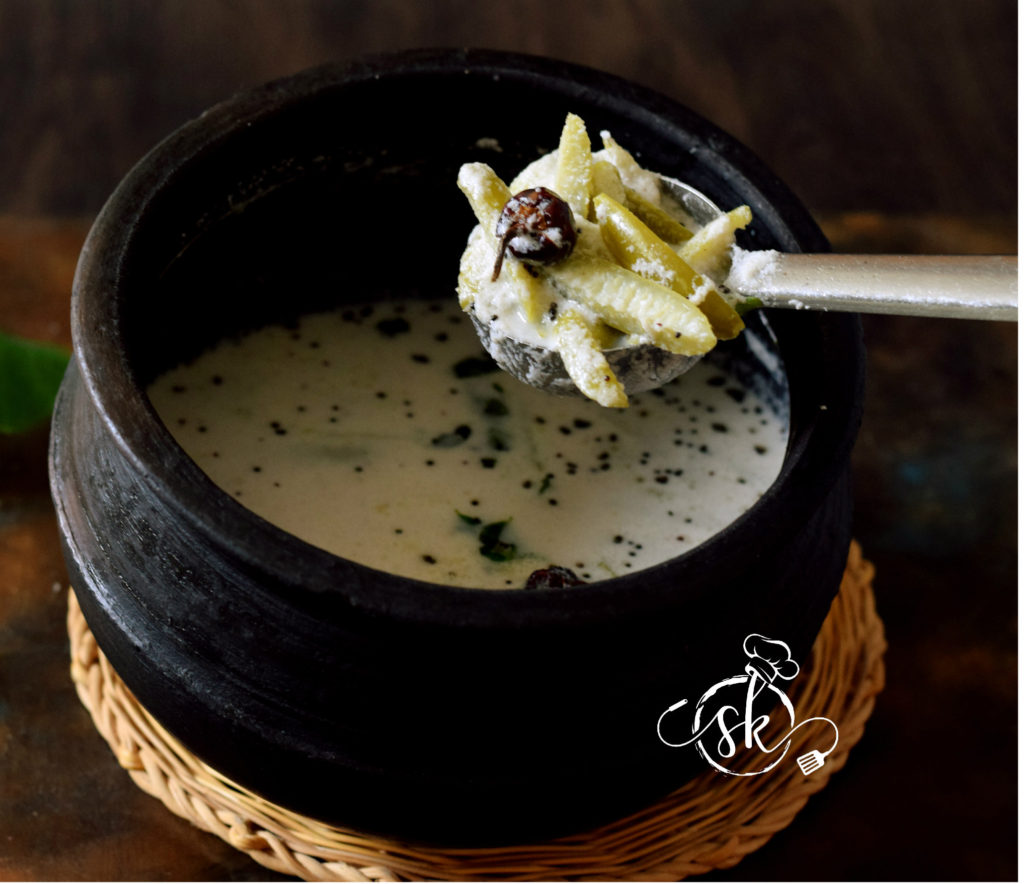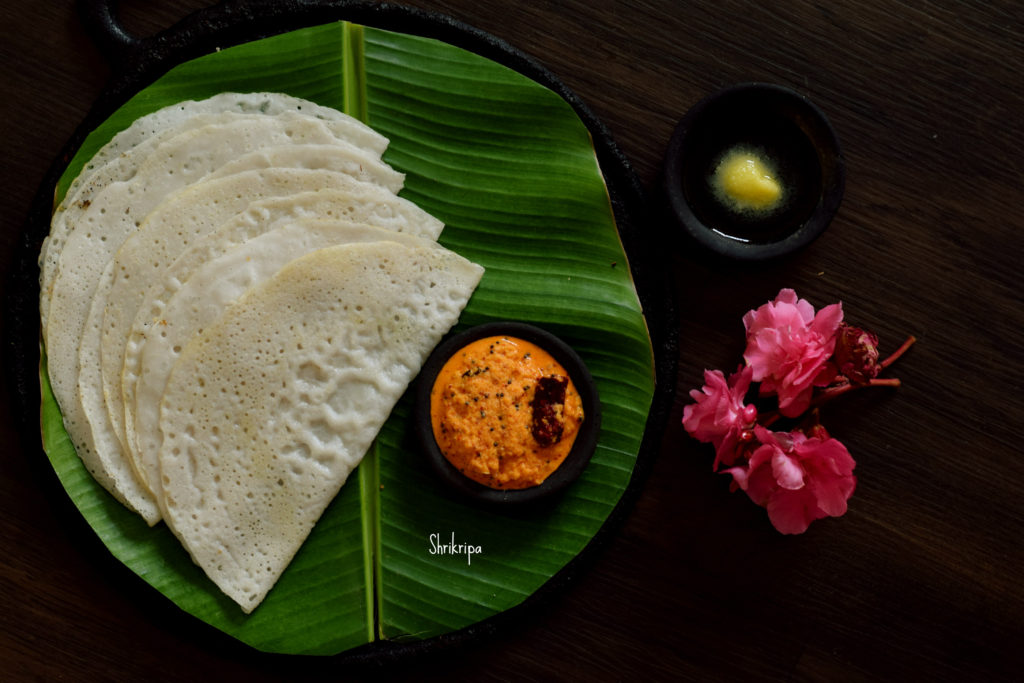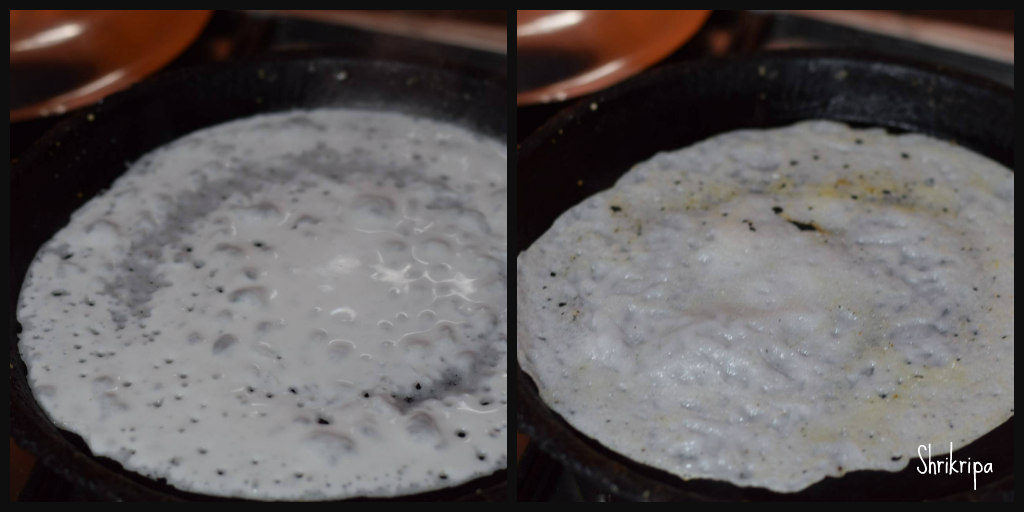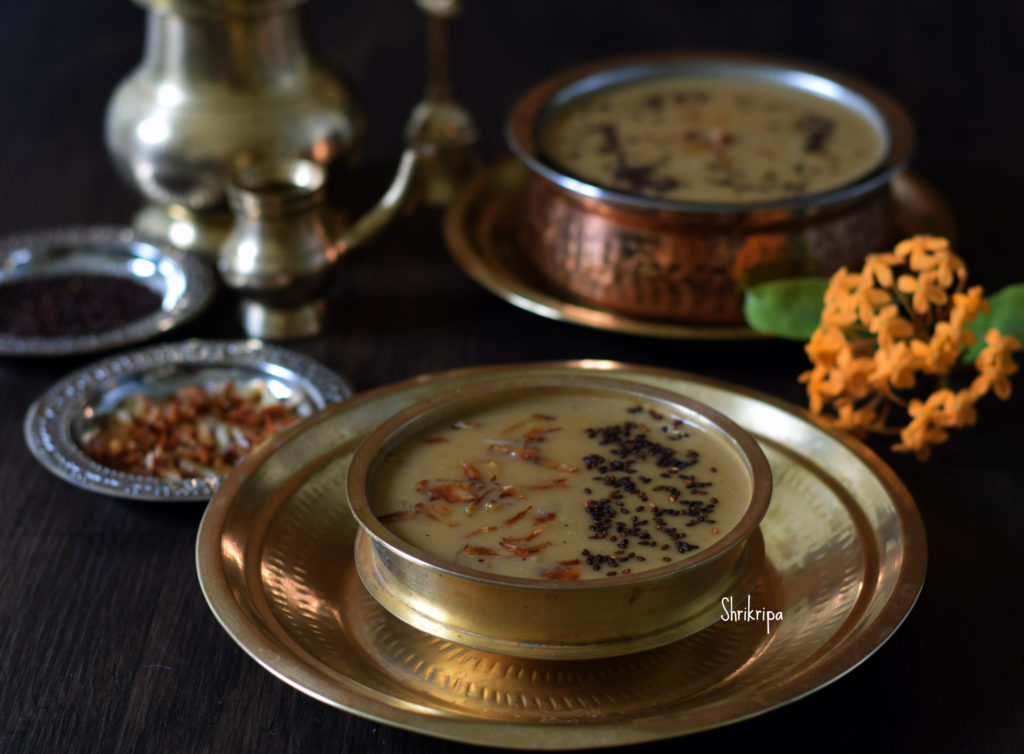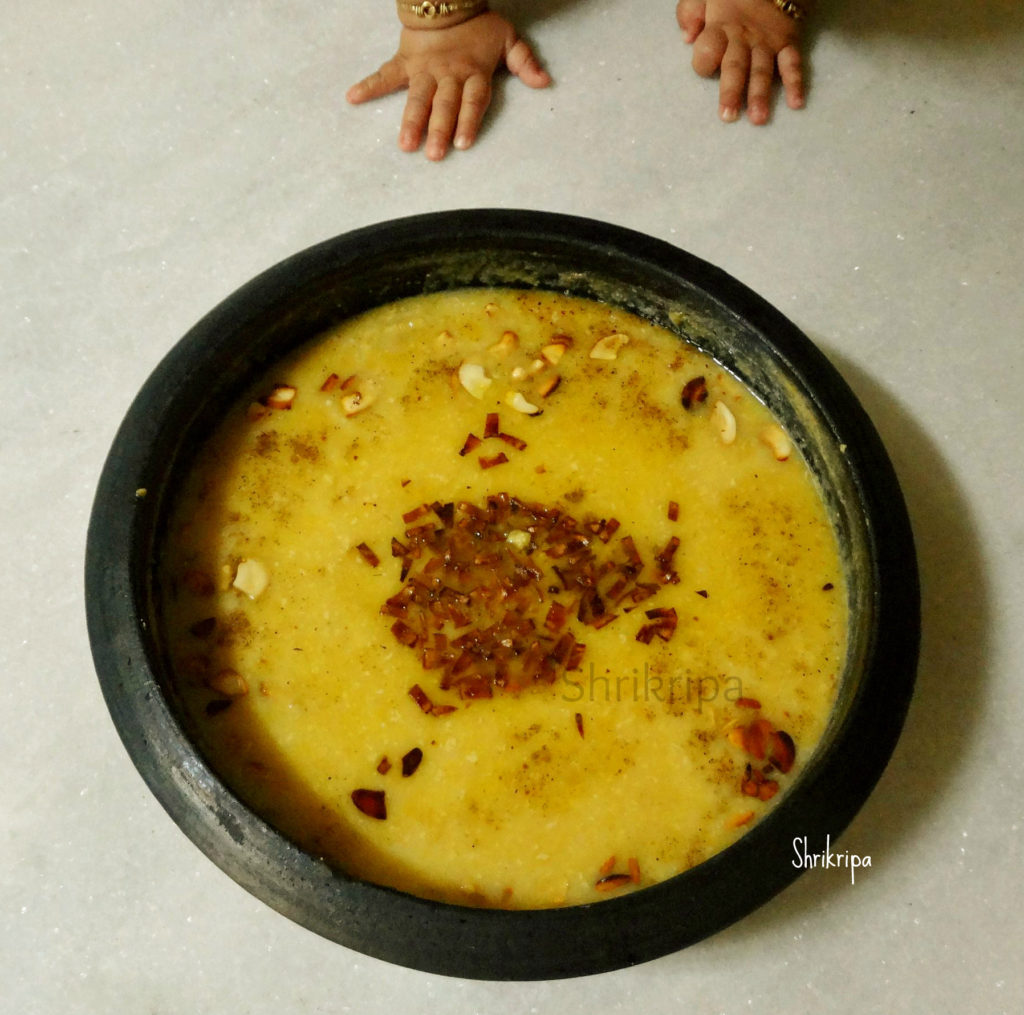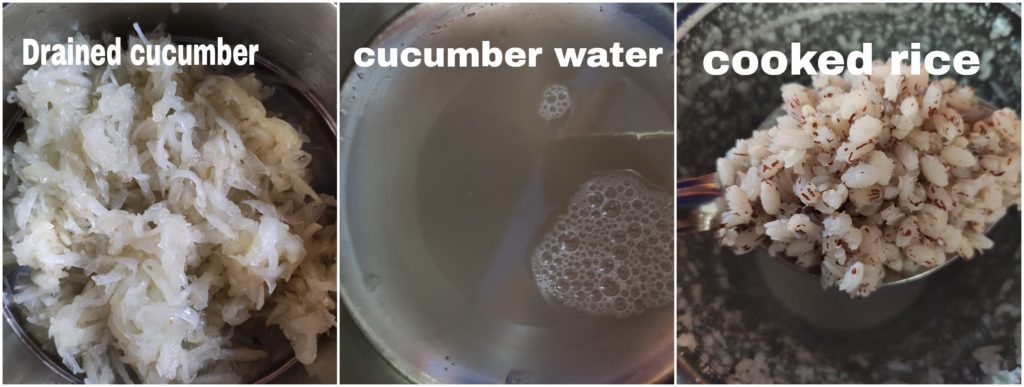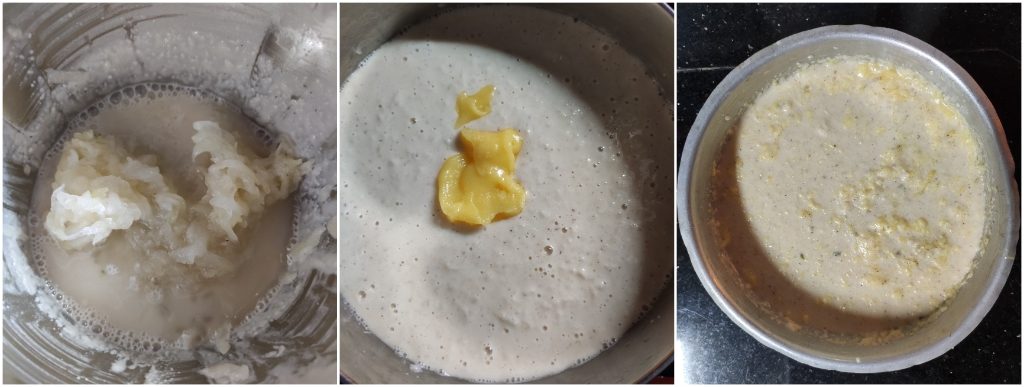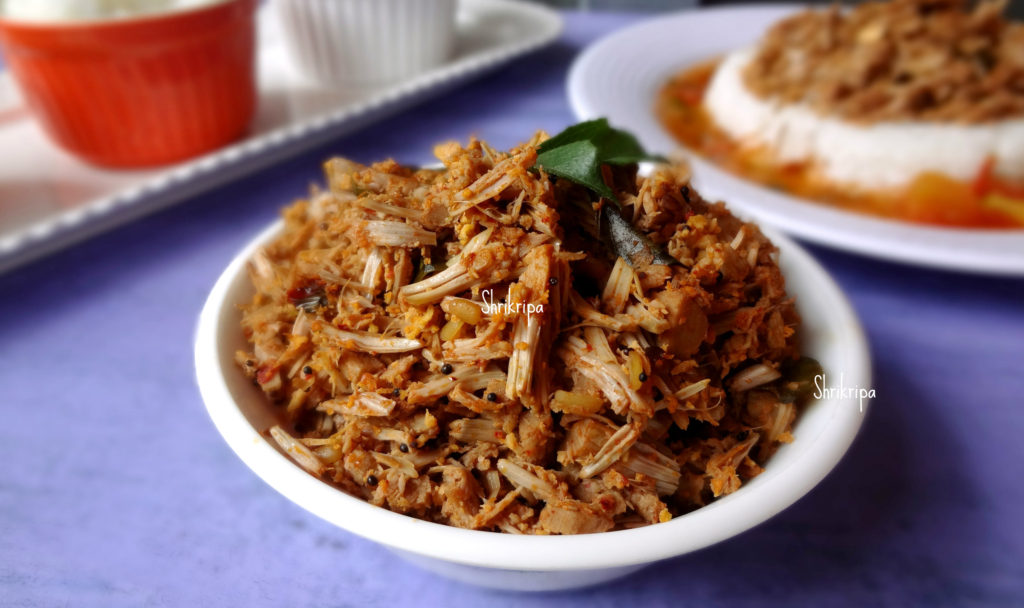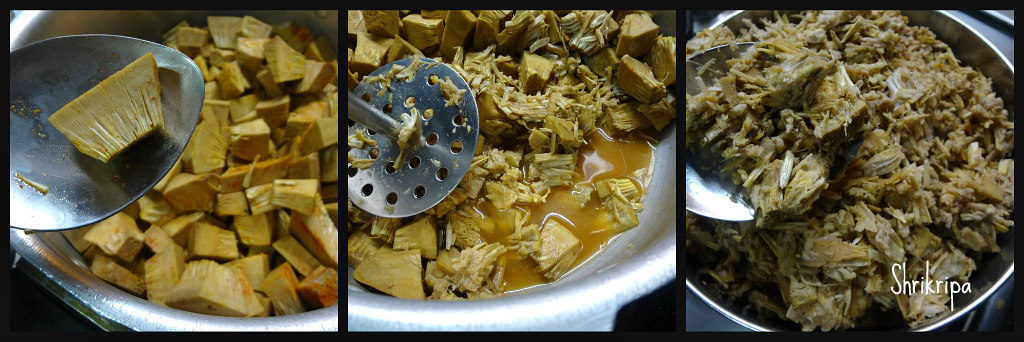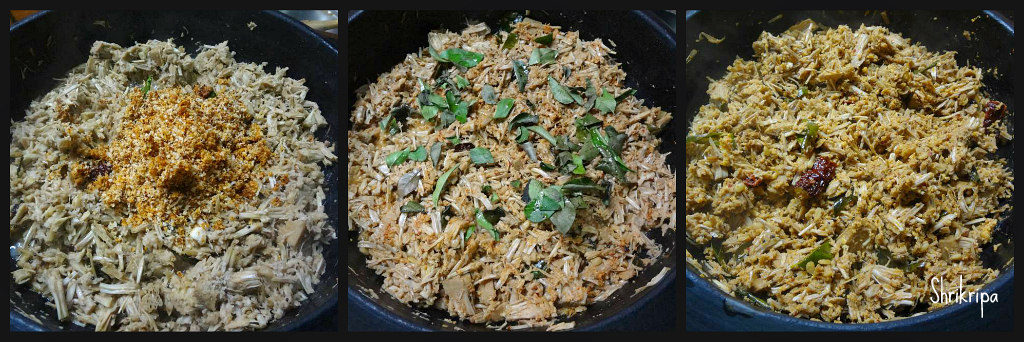Yam and Chana Melara is the Most loved dish of our community. It is an absolute favourite of my family as well. Today, I will share one more traditional recipe of our region and one of the favourite dishes you find on our wedding menu.
-Now prepare the Elephant foot yam or simply Yam; if you are new to the usage of Yam, please go through my detailed description of handling Yam, how to chop etc., in “Understanding the roots and tubers.” And go down until Tubers, and you would find the Yam under Number 6, and it is HERE.
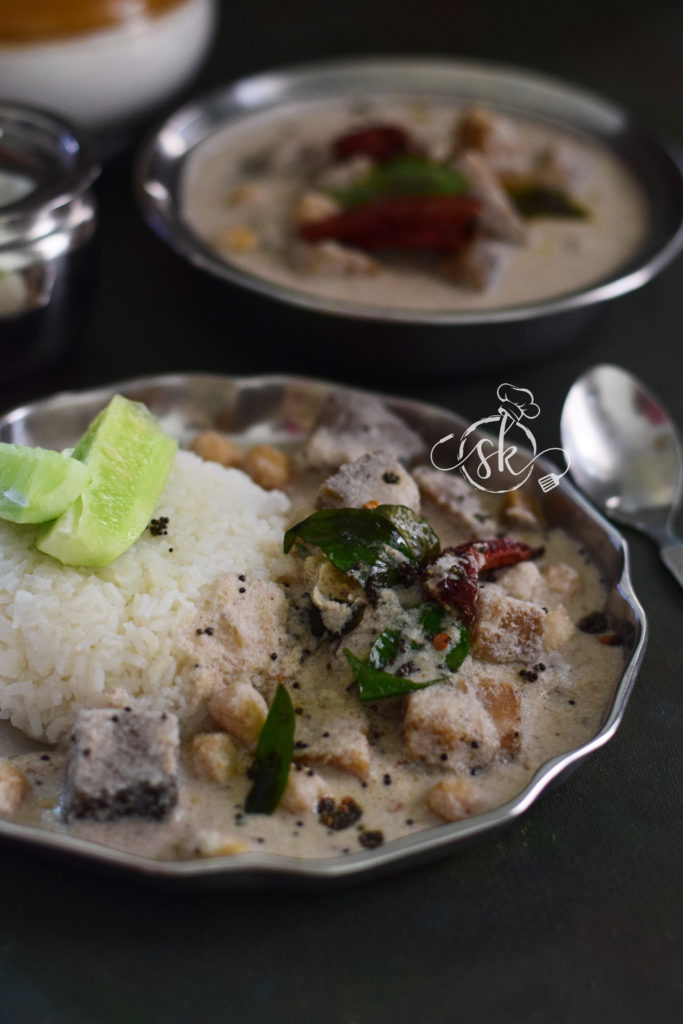
Ingredient:
yam – around ¼ kg
White chickpeas – ½ cup
Salt- as needed.
Green chillies – 2
tamarind – one gooseberry size (soak in 1 cup of water)
To grind: Fresh Coconut – 1 ½ cup
For Seasoning: Ghee or Coconut oil- 1 tablespoon, mustard – 1tsp, red chilli – 1 (optional), curry leaves- 1 spring.
Method:
-Soak dry chickpeas overnight and cook in a pressure cooker for 3 to 4 whistles or until done.
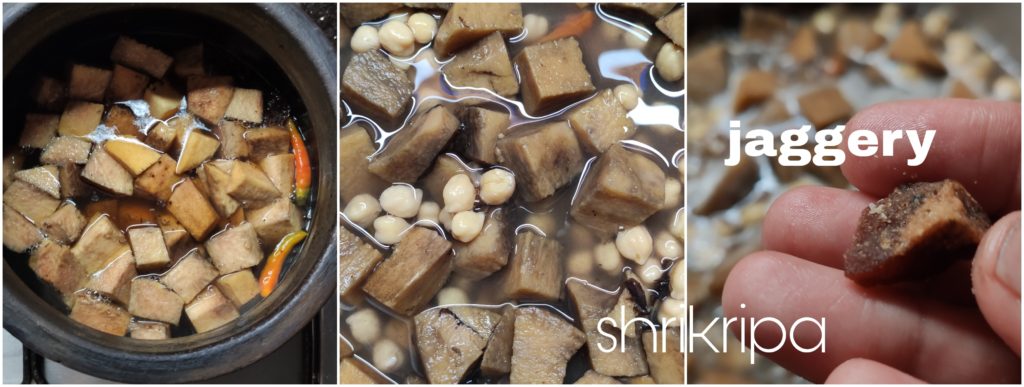
-Cook Yam until it is half done, add tamarind pulp, slit green chillies, cooked chickpeas, salt, jaggery and cook until Yam is soft and perfect.
Now, grind the coconut into a fine paste, add the paste into cooked veggies, adjust the consistency, and boil for 2 minutes.

-Add buttermilk or beaten curd, and when it starts to boil, switch off.
-Prepare seasoning, heat oil, splutter mustard, add red chilli and curry leaves, fry and pour over Melara. Serve with Rice.

